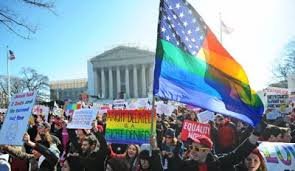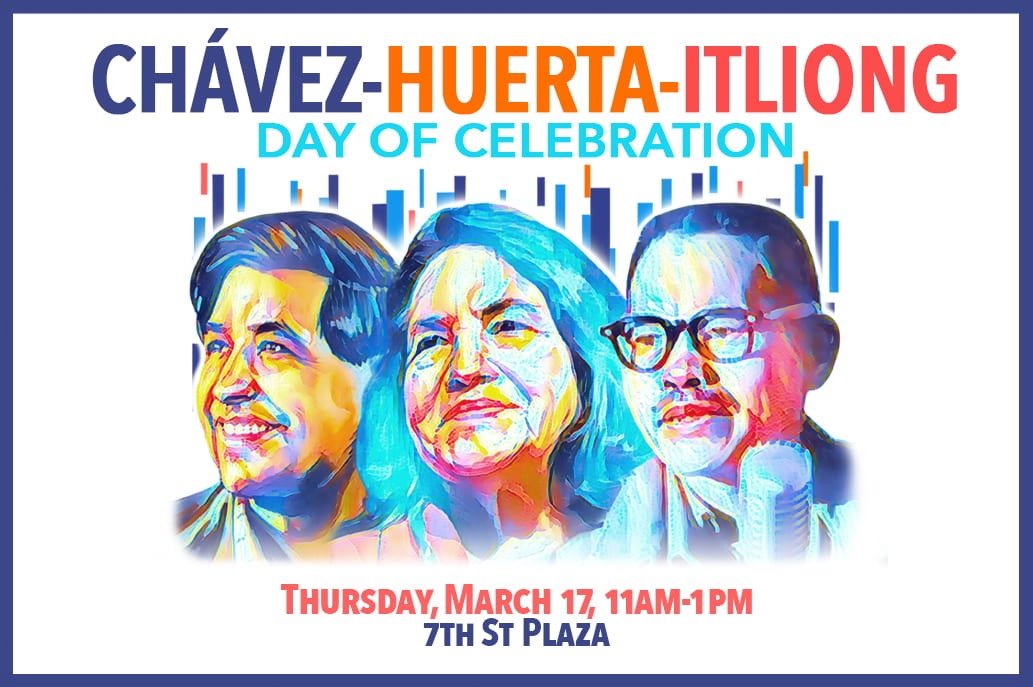SCHOOL Modules
OYHL provides in-depth modules covering the U.S. history we all need to know. Students come to appreciate that we live in history and develop greater awareness. This can transform their lives and equip them to make a difference in their communities and eventually the country.
The following OYHL modules are available as digital OER Commons resources. Most have a corresponding Multimedia Resource that supplements the module curriculum materials. Access full text modules and Multimedia Resources on OER Commons or using tabs below. OYH does not charge for non-commercial use of its programs. All OYH materials are subject to a Creative Commons license, here.
American Inheritances, Awareness and Leadership -- How the past affects my future
American Immigrant Nation: Past, Present, Future
American Women, 1848 to Now: Ownership, Leadership, and Rights
Twentieth Century LGBTQ+ Americans: the Experience of Difference
American Health Crises and Health Inequities Since 1900
American Apartheid: Segregation Outside the South, 1920-1960
Civil Rights in the New Deal
Civil Rights Leadership in the 1960s
Cesar Chavez, Dolores Huerta & La Causa: The 1960s Movement for Farmworker Dignity
America’s Poor & Working Class: The "Other America" and Identity Politics Since1890
_______________________________________________________________________
American Health Crises
and Health Inequities Since 1900
In 2020, the COVID-19 pandemic prompted Americans to reconsider how our socio-economic conditions, healthcare practices and government actions influence the country’s health. This module helps students to understand the forces that impact their individual health, as well as that of their families and communities.
Students explore Americans’ experiences in four health crises since 1900: Spanish flu, Polio, HIV/AIDS, and COVID-19. Participants research differences and outcomes among diverse groups, particularly the underserved poor and communities of color.
They examine the historical, socio-economic and medical factors that affect health and healthcare. Focus is on the importance of access to healthy environments, nutrition and education.
Students assess the health effects of inequities embedded in U.S. society, such as the impact on Black Americans of enslavement and Jim Crow segregation; health challenges facing Native Americans on reservations; limited care available to Latin immigrants and migrant farm workers; and the deprivations of low-income whites, especially in Appalachia and rural areas.
In a culminating activity, student groups propose a solution to a significant health issue and advocate its adoption, supported by relevant facts/evidence.
Streetcar conductors, New York City, 1918
_______________________________________________________________________
American Inheritances, Awareness and Leadership
Students analyze significant historical events American Inheritances, Awareness an d Leadership- their lifetime and consider how these events have impacted them.
They read autobiographical excerpts from a diverse group of public figures from Eleanor Roosevelt to Ta-Nehisi Coates and compare growing up stories.
They envision themselves at age 85 and reflect on their lives. They imagine the path they might have taken, project possible historical developments or events that may have affected them, and how they could have developed opportunities for leadership.
Students explore their immediate family and ancestors to help provide context for their own lives and consider the relevance of this personal legacy.
Immigrants arriving in New York Harbor, 1887
American Immigrant Nation:
Past, Present, Future
Students analyze Emma Lazarus' poem about the Statue of Liberty and review immigration in the 19th and 20th centuries.
They analyze and express the immigrant experience and the contribution of social workers circa 1880-1920.
They analyze post-2000 immigrant stories, contemporary issues, and recent immigration legislation and proposals.
Students draft a letter to a government official discussing contemporary immigration issues and suggest actions that could benefit both the country and immigrants.
They analyze photographs of "A Day Without an Immigrant" from the Los Angeles Public Library's Photo Collection.
Protestors in Milwaukee, Wisconsin, rallying against President Trump's immigration policies, 2017
American Women, 1848 to Now: Ownership, Leadership, and Rights
Students brainstorm -- What does human equality mean? Are women equal in our society?
They compare and analyze the 1848 Seneca Falls Declaration of Sentiments, the 1998 NOW Declaration of Sentiments, and the Universal Declaration of Human rights.
They participate in mock trials based on Supreme Court cases between 1973 and 1961 -- all upholding restrictions on women's rights. Attention then turns to the landmark 1971 Equal Protection case, Reed v. Reed.
These cases address the status of women, popular attitudes toward them as individuals, their activities as spouses, family members, and their economic roles in society, especially as employers and employees.
Students debate: "Women have all the rights and opportunities they need right now."
They interview athletes, teachers, coaches, and administrators to identify how Title IX affects their school.
The reach of #MeToo is illustrated by image from She The People.TV in India
20th Century LGBTQ+ Americans: the Experience of Difference
Students do an in-depth exploration of the LGBTQ+ experience in the United States since 1945.
They develop skills for addressing sensitive and difficult topics in an appropriate and mature manner.
They prepare presentations on key events affecting the LGBTQ+ community. These include the Lavender Scare of the 1950s; Stonewall; medical characterization of homosexuality; the "outing" of Billie Jean King in 1981; court cases involving LGBTQ+ rights (job discrimination, deportation, Boy Scout participation, sodomy statues & marriage equality) and transgender rights (sex discrimination, hiring, firing, working conditions).
Students research current laws that discriminate against LGBTQ+ or transgender persons.
They develop proposed legislation to remedy such discrimination.
American Apartheid: Segregation Outside the South, 1920-1960
Students analyze the Great Migration of Black Americans out of the South from 1900 to 1930. They examine the reasons for moving, scale of movement, and destinations, as well as the economic and social conditions in northern cities.
They examine housing discrimination and segregation, including federal, state and local redlining laws that denied opportunities to accumulate wealth through homeownership. They view scenes from A Raisin in the Sun to better understand the psychological toll of discrimination.
Using online historical maps, they examine redlining and its lasting effects on housing patterns in a city outside the South in 1940, 1970, and 2000. They research the geographic and economic impact of segregated neighborhoods for Black Americans.
Students consider 1960s-1970s efforts to address housing segregation, including speeches by President Johnson and Dr. Martin Luther King, provisions of the Housing and Urban Development Act of 1968 and 1978 Community Reinvestment Act, as well as data on minority homeownership & property values and mortgage lending.
They read major proposals for redressing urban economic blight and the damaging consequences of economic discrimination against non-whites, including reparations. Afterward, they brainstorm solutions to inner city American apartheid today.
White community sign posted in Detroit, Michigan, 1942
civil rights in the new deal
Students address the status of Black Americans in the 1930s. This module takes into account the role of Blacks in the New Deal coalition, appointments of a few Black Americans to government positions, and Eleanor Roosevelt's activities in response to Black challenges to segregation and discrimination.
Students examine segregation in Washington D.C. and the significance of the bold 1939 proposal by world renowned soprano Marian Anderson to perform before a mixed audience there.
They prepare 1941 White House staff responses to A. Phillip Randolph's challenge to FDR by announcing a massive march on Washington by Black Americans and their allies to end job discrimination in the growing defense industries. In preparation for a White House meeting with Randolph, they draft presentations to FDR on industrial segregation and options for his response (including an Executive Order). They also anticipate Congressional reactions and analyze other political considerations. They consider the effects of Executive Order 8802, perhaps FDR’s most significant action for civil rights.
Students divide into small groups. Each cluster identifies a cause it strongly cares about and plans a civic action that should be comparable to the boldness and risk-taking of Randolph's challenge to the President.
Marian Anderson performing at the Lincoln Memorial, Washington, D.C., Easter Sunday, 1939
Civil rights leadership in the 1960s
Students consider significant civil rights developments prior to 1960. These include Randolph's proposed 1941 March on Washington; Thurgood Marshall and the NAACP legal strategy culminating in Brown v Board of Education; the 1948 Democratic Convention and the Dixiecrat response; Little Rock school desegregation and "massive resistance" in the South.
Students consider the nonviolent protests strategy and actions of Martin Luther King Jr. & the SCLC, and John Lewis & SNCC.
They compare and contrast the goals & strategies for change of other significant civil rights leaders, including Roy Wilkins & the NAACP, James Farmer & CORE, and Whitney Young & the Urban League.
They examine the emergence of more radical groups, including their leadership, strategy & tactics, and their goals (e.g. , Malcolm X, SNCC Black Power, the Black Panthers, & the Memphis strike/Poor People's March.)
They hold a roundtable discussion and use their understanding of the civil rights movement from their preceding classes.
They prepare presentations to discuss what could have been alternative goals & strategies/tactics of the Civil Rights Movement, particularly after such historic developments as the enactment of the Civil Rights Act of 1964, Voting Rights Act of 1965, Fair Housing Act of 1968, Dr. King's assassination, and Richard Nixon's use of a "southern strategy" in the 1968 election.
They examine the "long hot summer" of 1967, urban riots, and the recommendations of the 1968 Kerner Commission.
Malcolm X speaking at a Harlem rally in New York City, 1963
Cesar Chavez, Dolores Huerta & La Causa: The 1960s Movement for Farmworker Dignity
Students analyze primary sources that document farm worker conditions in the 1960s and the La Causa ("The Cause") movement led by Cesar Chavez and Dolores Huerta.
They analyze and discuss their goals & achievements and their use of collective action. Students consider: "What does 'human dignity' mean to you?" and "How did Chavez & Huerta express their vision for human dignity?"
They read and analyze documents reflecting the views of Mexican-American, Filipino & other farm workers, as well as growers' views.
Students write an advocacy letter addressing migrant farm worker issues and the United Farm Workers' grape boycott. Students practice both written & oral advocacy.
They research conditions of farm workers today and write an op-ed article, "Has Chavez's & Huerta’s vision for 'human dignity' for farm workers been achieved?"
Building on their understanding of Huerta, Chavez, the United Farm Workers, and La Causa, students develop a plan for a collective movement to support a cause they care passionately about. They practice communication and leadership skills in creating a direct, tactical plan for their cause.
America’s Poor & Working Class: “The Other America” and Identity Politics Since 1890
Students consider 1890s Populist songs and cartoons of popular protests. They create protest cartoons and songs about contemporary issues.
They read excerpts from Let Us Now Praise Famous Men about conditions of poor white sharecroppers in Alabama in the 1930s Great Depression. Next, they read interviews with sharecroppers’ descendants describing their lives in the 1960s.
Students examine the creation the concept of "race" and development of racism in support of European colonialism. They consider the subsequent deepening of racism through elaborate pseudo-scientific pronouncements, and commentary in response by Frederick Douglass, James Baldwin and others.
They consider how best to address a diverse spectrum of political and social perspectives. They also research a post-1890s controversial leader and prepare a eulogy for that individual.
Students work to develop awareness, tolerance, and leadership by considering how to work with those whose views are fundamentally different from theirs.
A mill worker's family who became sharecroppers after the mill closed, Georgia, 1937
forthcoming modules
In addition to the completed school modules, three more topics are in development.
1. The regime of fear and violence in the Jim Crow South (1880-1920), including the convict lease system and lynching
2. Native American experience since the 1830s
3. American Anti-Semitism











